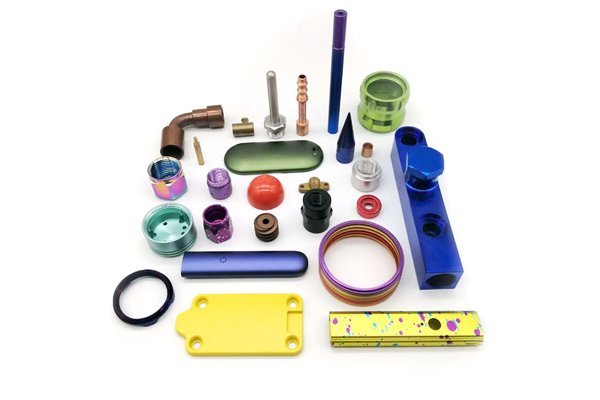Did you know that approximately 95% of aluminum metals worldwide are produced through processes like CNC machining? This fascinating statistic underscores the significance of understanding customer needs within the vastly growing landscape of aluminum machining. As industries increasingly rely on precision-engineered aluminum components, the ability to analyze and meet customer specifications becomes essential for manufacturers aiming to stand out in a competitive market.
In this blog, we will delve deeply into the process of understanding customer requirements, how to effectively analyze needs, and practical strategies for aligning CNC machining operations with those needs. By the end of this comprehensive guide, readers will be equipped with valuable insights and techniques to optimize their aluminum CNC machining processes, ensuring high-quality products that meet or exceed customer expectations.
Chapter 1: The Importance of Understanding Customer Needs
The foundation of any successful CNC machining business lies in its ability to align its offerings with customer needs. But why is it so vital?
Chapter 2: Techniques for Analyzing Customer Needs
With an understanding of why customer needs are critical, let’s dive into the methodologies that can be employed to effectively analyze those needs.
2.1 Customer Interviews and Surveys
One-on-one interactions or surveys can provide profound insights into customer expectations. Formulate precise questions that target their pain points, expectations for quality, and any specific requirements they have regarding aluminum components.Possible interview questions may include:
2.2 Competitor Analysis
Knowing what competitors are offering can help in understanding the baseline expectations within the industry. Identify industry leaders and analyze their products, customer feedback, and market positioning. Understanding the strengths and weaknesses of competitors enables you to position your services to fulfill unmet customer needs.
2.3 Industry Standards and Regulations
In aluminum CNC machining, various standards come into play, such as ISO certifications and ASTM specifications. By familiarizing yourself with these industry regulations, you can better understand the baseline customer expectations and elevate your offerings by exceeding those standards.
2.4 Use of Digital Tools
Leverage modern digital tools like Customer Relationship Management (CRM) software, project management tools, and production tracking systems. Many of these tools have analytics features that help in aggregating data and identifying trends or patterns in customer demands.
2.5 Feedback Loops
Create structured feedback loops by reaching out to clients post-delivery. Surveys and follow-up discussions will help in refining your understanding of their needs and enable you to adjust production processes accordingly.
Chapter 3: Tailoring CNC Machining Processes to Customer Needs
Having effectively analyzed customer requirements, the next step is to translate these insights into actionable CNC machining processes.
3.1 Customization Capabilities
Customization is at the heart of CNC machining. Whether it’s unique dimensions, specific alloys, or specialized surface finishes, offering tailored solutions enhances customer satisfaction. Establishing a modular approach allows for flexibility in production.

3.2 Selecting the Right Aluminum Alloy
Not all aluminum alloys are created equal. The selection of the appropriate alloy based on the customer’s specific application can make a world of difference. For instance, AL6061 is excellent for structural applications due to its strength and weldability, while AL7075 is preferred for aerospace due to its high strength-to-weight ratio.
3.3 Precision Tolerances and Quality Control
Precision is non-negotiable in CNC machining. Create processes that not only achieve but exceed set tolerances. Implement Quality Assurance (QA) protocols that include inspection at various stages of production to catch defects early.
3.4 Surface Finishing Techniques
The surface finish can greatly influence the performance and aesthetics of aluminum parts. Techniques such as anodizing, powder coating, and sandblasting can be utilized based on customer preferences. Understanding the customer’s application and expected aesthetic outcome can help guide the choice of surface finishing techniques used.
3.5 Lean Manufacturing Principles
Incorporating lean manufacturing principles can streamline processes and minimize waste. Practices such as Just-In-Time (JIT) production, value stream mapping, and 5S can enhance throughput while maintaining quality.
Chapter 4: Communicating with Customers
Once customer needs have been analyzed and aligned with production capabilities, effective communication is vital to ensure transparency and maintain trust.
4.1 Setting Expectations
Clearly articulate timelines, production capabilities, and potential challenges during the early stages of any engagement. Proactive communication about any delays or issues that arise is key to maintaining customer trust.
4.2 Offer Expertise
Position yourself as an industry expert. Provide customers with insights about aluminum machining best practices, materials selection, and design optimization. This not only shows your commitment to their needs but can also lead to customer appreciation and loyalty.
4.3 Continuous Engagement
Build a rapport with customers through continuous engagement – whether it’s through newsletters, project updates, or forums. A sense of community fosters reliance and bolsters long-term relationships.
Chapter 5: Adapting to Evolving Needs
The manufacturing landscape is ever-changing, and staying ahead means constantly re-evaluating customer needs and adapting processes accordingly.
5.1 Continual Learning
Encourage a culture of learning within your organization. This includes staying informed about industry trends, technological advancements, and evolving customer needs.
5.2 Implementing Agile Methodologies
Adopt agile methodologies to allow for rapid adaptation to customer feedback and changes in demand. Embracing flexibility will enable quicker shifts in processes and production schedules.
5.3 Customer-Centric Innovation
Regularly review customer needs to identify gaps in your service offerings. Innovate to fill these gaps – whether it be through new machining processes, advanced materials, or enhanced customer service practices.
In an industry where competition is fierce and customer expectations continue to evolve, the ability to analyze and meet customer needs in aluminum CNC machining has never been more critical. By employing targeted techniques to understand customer requirements, tailoring processes for optimal results, and maintaining open and effective communication, manufacturers can reinforce their market position.
Understanding and fulfilling customer needs is more than just a business requirement; it’s an ongoing commitment to excellence. As you consider the strategies outlined in this blog, remember that customers are not just looking for products but for partners who can provide value, quality, and innovation.
In a world driven by precision and customization, the significance of understanding your customer’s needs can open doors to long-lasting relationships and successful outcomes. The insights provided here are not only worth consideration but are pivotal in shaping the future of your CNC machining operations. Embrace these principles, and position yourself as a leader in an ever-evolving industry.



